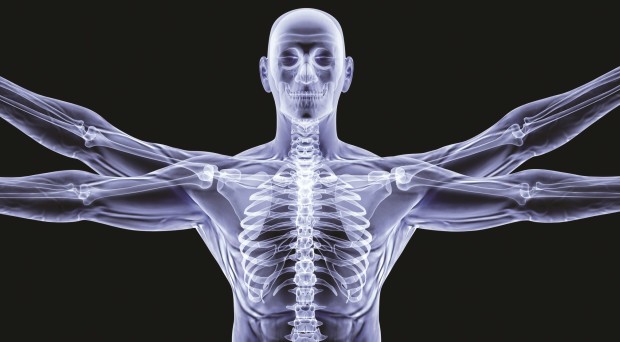
The BMC series has led the way in open access publishing for over fifteen years. Until now, like most other journals in the BMC series, BMC Physiology has been overseen by an Executive Editor at BioMed Central. However, as the field continues to grow we are delighted to announce the appointment of an Editor-in-Chief, Professor Kathy Myburgh from the University of Stellenbosch’s Department of Physiological Sciences, to lead the journal forward.
For most of the BMC-series journals, the Executive Editor is supported by subject-specialist academic Section Editors. For BMC Physiology, a journal that is continuing to evolve its identity, it made sense for the whole journal to fall under the responsibility of one Editor-in-Chief who would be able to provide an overarching vision for the journal. Of course, as part of the BMC series, BMC Physiology will still uphold our ethos of being open, inclusive and trusted, and will remain committed to offering an efficient, fair and friendly peer review service, publishing all sound science, provided that there is some advance in knowledge presented by the work.
To mark the launch of the new editorial model, we’ve asked Professor Myburgh to tell us more about herself and her plans for the journal.
What inspired you to study physiology?
Even as a child I was always interested in “living things” – the life cycle of silkworms; why you had to search so long to find a four-leafed clover, but if you found one, it was likely to come up again in the same place the following year. But once I realised that I could actually learn how the human body worked from the inside, beans sprouting in wet cottonwool just didn’t come up to scratch anymore.
Why did you decide to get involved with publishing?
My first job as a research assistant was to cut out MedLine abstracts (my Professor received a list of about 100 once a month through the MRC) and paste them onto index cards; this was NOT fun. But he would then select which ones I should find in the library stacks. I was more interested in reading them than photocopying and that is when I decided to do my Masters. One day when I was in the library it dawned on me that I could do this for the rest of my life – that I would never need to be bored. It has been extremely exciting to be part of the evolution of free online searching and now online publishing – so available. In short, the publishing landscape has had such a major impact on the exponential advancement of science over the past 15 years, that I am inspired to be involved.
Technical advances are shaping a modern version of physiology … allowing physiologists to return to decades-old questions that we have not been able to solve, simply because we did not have the tools.
What do you hope to achieve as Editor-in-Chief of BMC Physiology?
I’ve been a BMC Physiology Section Editor for quite a number of years, but submissions were few and far between. At a BMC Editor’s Forum I had the chance to discuss possible reasons with the Executive Editor and this led to the invitation to put forward some ideas. My hope is that I can lead the revitalisation of the journal. This has already started with the decision to make significant changes to the sections for manuscript submission. I wish to maintain our strength in whole body and physiology systems, but to expand and acknowledge the rapid advances in cellular physiology and the role of physiologists in biomedical research and regenerative medicine.
What do you think the future holds for the physiology field?
Technical advances are shaping a modern version of physiology, for example studies that include highly sophisticated imaging. This is allowing physiologists to return to decades-old questions that we have not been able to solve, simply because we did not have the tools. However, technical specialisation has resulted in a greater need for collaboration or working in large groups. Because physiology will always be focussed on integration it will remain a key discipline for studying the relevance of more reductionist research. This is not a new idea – the renaissance of physiology research began after the human genome was sequenced. That was just the start. There is a new generation of physiologists who are making use of in silico techniques to inform their study designs and analytical choices.
The journal will now be divided up into an exciting array of new sections, covering the wide and challenging world of physiology research and its important position in biomedical research.
The new Integrated and environmental physiology section has been created by combining the journal’s three existing integrative sections. The new section will consider studies examining the physiological responses elicited by the external environment and other exogenous stimuli, as well as endogenous stressors. The consequences of these stressors on all aspects of integrative physiology are of interest to our readers. The diversity of functional characteristics at organismic, cellular or molecular levels of organization will continue to be covered by the Comparative physiology section.
Meanwhile, Circulation, cardiovascular and respiratory physiology will continue to publish studies on all aspects of the cardiovascular and respiratory systems. The new Muscle and connective tissue section aims to publish studies on all aspects of skeletal, smooth and cardiac muscle, as well as connective tissues including bone and cartilage. As research is increasingly focused on the interface between muscle and connective tissue BMC Physiology is excited to now consider these articles in this new dedicated section.
Another exciting new addition that reflects the evolving nature of physiology research is a section dedicated specially to Cellular physiology, which will publish studies utilizing cellular and molecular approaches to examine physiological mechanisms in all organ systems.
Three of the journal’s new sections will be more broadly orientated toward biomedical physiology, preclinical studies and regenerative medicine. The Biomedical research section aims to publish studies looking at the regulation and function of organ systems, including those covered by the other sections, as well as neurophysiology, immunological, endocrine, renal and circadian physiology. This section will also consider the molecular mechanisms leading to dysfunction in these systems, and the downstream cellular and molecular consequences. The Translational and preclinical models section aims to publish studies that provide insights that can be translated to clinical applications, and encourages studies that utilize and describe preclinical models of disease states. All aspects of renewal, restoration, and growth will be considered in the Regenerative medicine section, including models of damage or disease that will benefit from the application of regenerative strategies.
This new structure marks an exciting step for BMC Physiology. If you are interested in the journal or being involved then please do not hesitate to contact the Executive Editor, Anna Clark, at Anna.Clark@biomedcentral.com
Comments